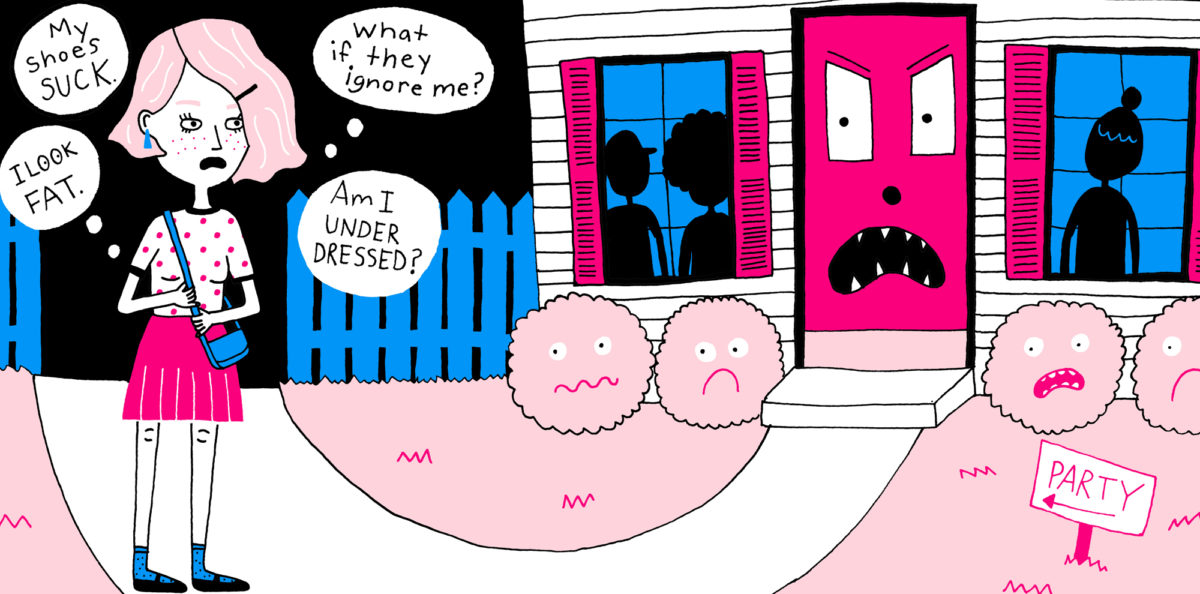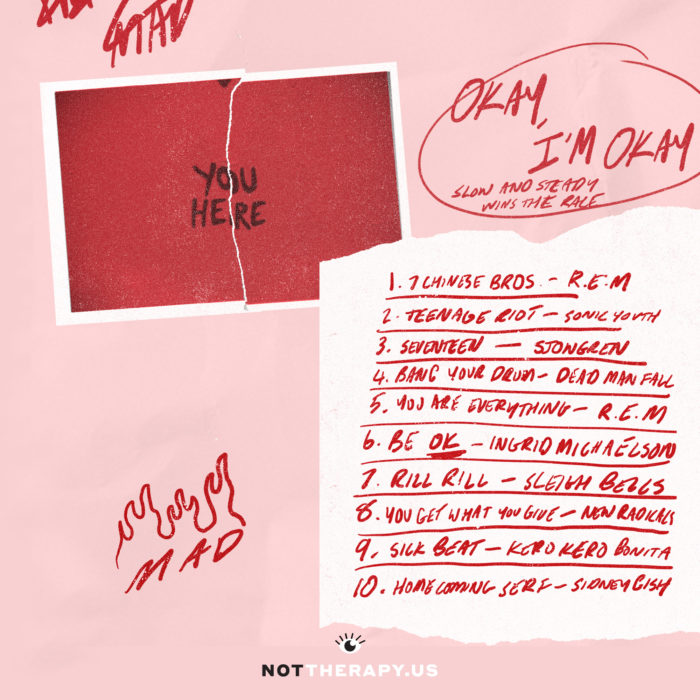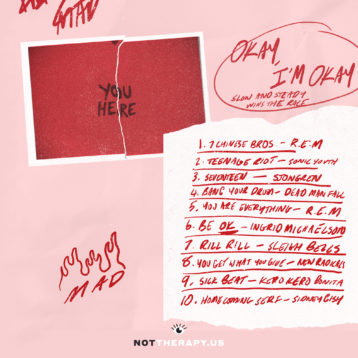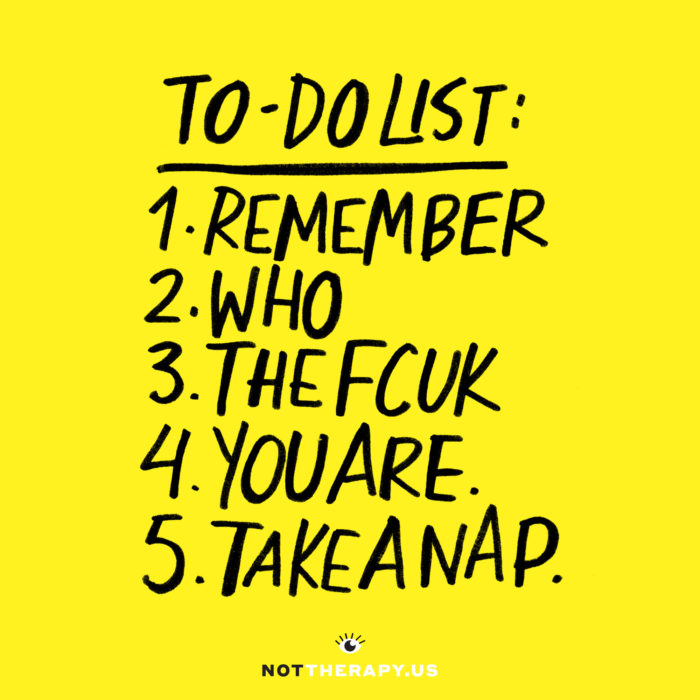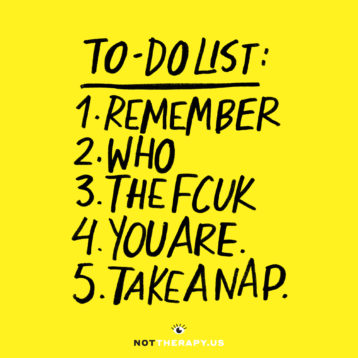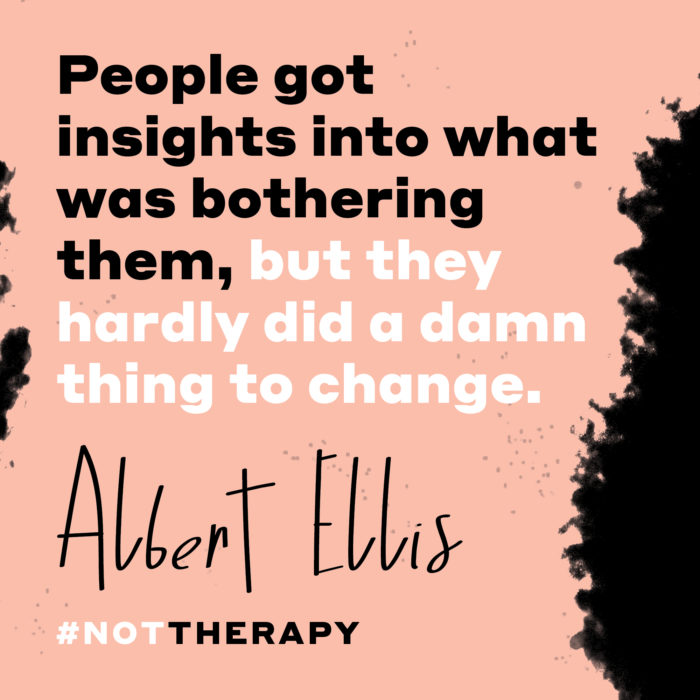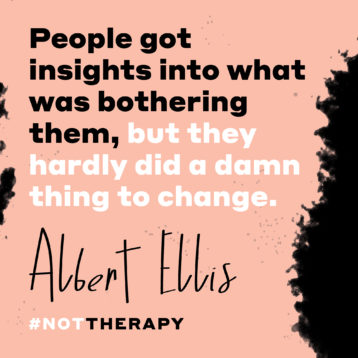Noooo. I’m not shy. I’m freaking the eff OUT.
I hate when my mom does that, “Oh she’s just shy. When I was younger, I was shy, too.” Um… No mom, I’m actually not shy at all. But cool, keep making excuses for whatever the hell is wrong with me and I’ll just become some recluse afraid of leaving the house. God, I hate this. I hate going to school. I hate going to lunch at school. Gym is a total disaster. Winter break was a break from it all but now I’m back to the grind and, shit! That group of girls can see me sweating over here. I look like a weirdo. I’m not a weirdo. Wait, am I a weirdo?
Nope. You’re not a weirdo at all.
We’ve all been there to some degree. Performance- or social-based anxiety can actually be a positive; it helps motivate us to prepare and thus perform better.
For most teens, fear of rejection is a real thing. But then, there are those of us with Social Anxiety Disorder (SAD).
The fear of how we’ll be perceived by others can be so overwhelming that we can’t think, speak or be ourselves; it renders us incapable of joining in on what seems like normal high school living. The fear can feel uncontrollable and a lot of times we know damn well that the fear is disproportionate to the situation but it just won’t quit. So, we do.
The physical responses to the fear—shaking, sweating, heart-pounding—can make you feel like you’re having a heart attack. You’re not. But left unchecked, you could be at risk of heartbreak.
Failure to connect with peers in HS and beyond risks isolation, which can leave you feeling heartbroken as hell. Like really, really sad. The good news is that there are solutions for social anxiety disorder.
The first part of hopping into any solution is understanding the problem thoroughly.
Let’s start there.
#TheFacts
Approximately 5.3 million Americans have Social Anxiety Disorder (sometimes called Social Phobia) in any given year. SAD occurs in women twice as often as in men. The disorder typically begins in childhood or tween years and rarely develops after age 25.
The major symptoms are:
- A persistent fear of embarrassing yourself in front of others.
- Panic (or a full-blown panic attack) when in a social setting or giving a performance.
- The realization that this is not how you’re supposed to feel.
- Avoidance of social settings, or else enduring them while feeling intensely anxious and distressed.
- Anxiety about having anxiety. The avoidance, anxious anticipation, or distress in the feared social or performance situation(s) interferes significantly with your normal routine, academics, social activities or relationships.
- The fear, anxiety, or avoidance is persistent, typically lasting six months or more.
Like most other emotional and physical issues, there are both genetic and environmental factors that contribute to SAD.
#InOtherWords
A lot of people experience Social Anxiety Disorder. It feels different for each person, but it sucks for everyone who experiences it.
SAD comes in a couple of different flavors. One flavor is performance-focused: things like speaking in public, ordering in restaurants, shopping in stores or paying the delivery person at the door triggers it hardcore.
The other flavor is interactional-focused: everyday social things, like eating in public, using the bathroom at the mall and going to school are the culprits. Sometimes, those things cause intense anxiety in the moment, other times the anxiety comes on well beforehand just thinking about it.
I’ve seen both flavors manifest in girls and women of all ages. Over the years, I’ve seen kids as young as three-years-old skipping lunch at school for fear of being judged for how they chew their food. I’ve met teens so petrified to ask to use the restroom during the school day that they “hold it” til the bell rings at dismissal. I’ve also known adults who’ve dodged job promotions, fearing that the added responsibility would come with an expectation to speak in front of the team and doing so just wasn’t worth the agony, even with the much-needed increase in pay.
While getting on the solution side of SAD ain’t easy, what you’re experiencing now isn’t easy either.
Walking through the fear is pain that leads to a better end. It takes a strong commitment on your part. A support system can help, too. Individual therapy might be part of of your solution. Here’s a link for you to find someone near you.
#TheFeels
In the meantime, let’s talk about all the feels. One of the major problems with SAD is how sad we can become when our anxiety keeps us from doing things we really want to do with our friends and in our lives.
Yup, social anxiety can lead to depression and problems with alcohol and drugs, too. It makes sense. When you’re stuck at home and everyone else is out having fun, it feels really friggin lonely. Then, to take the edge off and be able to engage, some teens resort to alcohol or drugs, until that becomes a problem on top of the original problem. It’s a nightmare.
Instead of compounding the problems, let’s talk solutions.
1. Comfort’s overrated—just do it.
Sometimes the fear beforehand is much worse than actually doing whatever it is you’re wishing you could avoid.
Best case is that the fear never shows up. Comfort feels better than fear, but overcoming the fear feels better than comfort.
It’s time to push yourself.
2. Not so fast—don’t avoid it.
Avoidance perpetuates anxiety. It makes you feel better in the moment, but the next time you have to do the dreaded thing, the anxiety is back and now it’s worse than before.
The key is to walk (even if slowly with sweat dripping from your brow) toward the fear. Next time, it’ll be a bit better vs. worse.
3. Baby steps—start small.
Start with the most tolerable version of the thing you’re afraid to do. Give the speech at home for your friends before doing it in front of the class. Eat something super-easy like a granola bar in the cafeteria before going all out with the spaghetti and meatballs. Slow and steady wins the race.
4. Chillax—lose the monster drink.
If you experience physiological symptoms of anxiety, calm down the caffeine intake on the day of the party.
Download the headspace app and do some deep breathing. Meditate. Chill out before go-time.
If doing these things feels impossible, tell a trusted adult and get the care you deserve. In the meantime, let’s get real with SAD and #DoThisThing.
Illustration by Meghan Eplett.


